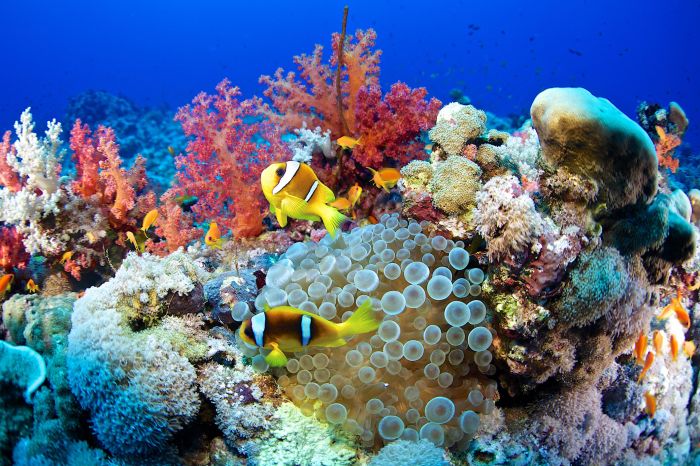
Best birdwatching destinations for migratory birds offer unparalleled opportunities for nature enthusiasts. The annual migrations of these avian travelers create a dynamic spectacle, with different locations boasting unique species and optimal viewing periods. Factors such as habitat diversity, climate, and conservation efforts all play a crucial role in determining the best spots for observing these magnificent creatures in their natural environment.
This exploration delves into the world’s top destinations, highlighting the species you might encounter and the ideal times to visit.
From the vibrant ecosystems of North America to the diverse landscapes of Africa and beyond, we’ll examine various regions, revealing hidden gems and renowned national parks that serve as havens for migratory birds. We will also explore sustainable tourism practices, ensuring that your birdwatching adventure contributes positively to the preservation of these incredible species and their habitats. Prepare to embark on a journey of discovery, learning about responsible birdwatching, planning your trip, and understanding the crucial role of conservation in safeguarding these avian wonders.
Best Birdwatching Destinations for Migratory Birds
Witnessing the breathtaking spectacle of migratory birds traversing continents is a privilege for birdwatchers worldwide. These incredible journeys, driven by instinct and the changing seasons, offer unparalleled opportunities to observe a vast array of avian species in their natural habitats. From the vibrant plumage of tropical tanagers to the elegant flight of raptors, the diversity and sheer spectacle make migratory birdwatching a truly captivating experience.The ideal locations for observing migratory birds are influenced by several key factors.
These include the geographic location along major flyways, the presence of crucial stopover sites offering abundant food and shelter, and the time of year coinciding with peak migration periods. Habitats such as wetlands, coastal areas, and mountain passes often serve as vital resting and refueling points for these tireless travelers, making them prime locations for birdwatching enthusiasts.
Major Migratory Flyways and Key Locations
Migratory birds follow established routes, known as flyways, during their annual migrations. Understanding these routes is crucial for identifying prime birdwatching locations. The four major flyways in North America – the Atlantic, Mississippi, Central, and Pacific – offer unique opportunities to observe different species. For example, the Mississippi Flyway is known for its diverse waterfowl populations, while the Pacific Flyway is renowned for its shorebirds and raptors.
Similarly, the East Asian-Australasian Flyway, the African-Eurasian Flyway, and the Americas Flyway each possess unique characteristics that dictate the species observed and the best times for viewing. Specific locations within these flyways, such as the Gulf Coast of the United States, the Strait of Gibraltar, and the Alaskan coast, are renowned for their exceptional birdwatching opportunities during peak migration seasons.
These areas provide ample food resources and suitable resting habitats, attracting vast numbers of migrating birds.
Optimal Timing for Birdwatching Migratory Species, Best birdwatching destinations for migratory birds
The timing of your birdwatching trip is paramount. Migration patterns vary greatly depending on the species and geographic location. For instance, spring migration typically sees a surge in warblers and other songbirds moving north to breeding grounds, while autumn migration brings a wealth of raptors and waterfowl heading south for the winter. Detailed knowledge of the specific migration periods for your target species, often available through local birdwatching clubs or online resources, is crucial for maximizing your chances of a successful birdwatching experience.
For example, the peak migration of monarch butterflies in Mexico, a spectacular sight in itself, offers a chance to observe these remarkable insects during their journey. Similarly, the timing of the arrival of certain species of geese or ducks in specific wetlands can be easily predicted with good research.
Top Destinations by Geographic Region

Planning a birdwatching trip requires careful consideration of location and timing to maximize your chances of seeing migratory birds. The best destinations often boast diverse habitats and a convergence of migratory routes, offering unparalleled opportunities for observation. This section highlights prime locations across various geographic regions, focusing on their unique avian inhabitants and ideal visiting periods.
North American Birdwatching Destinations
North America offers a vast array of habitats, from boreal forests to coastal wetlands, attracting a diverse range of migratory birds. The following table details some of the continent’s best birdwatching locations.
| Region | Destination | Key Migratory Bird Species | Best Time to Visit |
|---|---|---|---|
| Eastern US | Cape May, New Jersey | Warblers (various species), raptors (e.g., Broad-winged Hawk), shorebirds | September – October (fall migration) |
| Texas Coast | Aransas National Wildlife Refuge | Whooping Crane, various waterfowl, shorebirds | Winter (November – March) |
| Central America | Point Pinos, California | Various seabirds, shorebirds, raptors | Spring (March – May) |
Cape May’s strategic location on the Atlantic Flyway makes it a crucial stopover for millions of migrating birds. Observers can witness spectacular displays of warblers, while the fall hawk migration offers breathtaking views of soaring raptors. Aransas National Wildlife Refuge provides a critical wintering habitat for the endangered Whooping Crane, alongside a rich diversity of waterfowl and shorebirds.
Point Pinos offers dramatic coastal views and attracts a wide array of seabirds, shorebirds, and migrating raptors.
South American Birdwatching Destinations
South America’s diverse ecosystems, from the Amazon rainforest to the Andes Mountains, support a remarkable array of bird species, many of which are migratory.
| Region | Destination | Key Migratory Bird Species | Best Time to Visit |
|---|---|---|---|
| Amazon Basin | Tambopata National Reserve, Peru | Various macaws, parrots, hummingbirds, and other neotropical species | Year-round (peak seasons vary by species) |
| Pantanal | Pantanal, Brazil | Hyacinth Macaw, Jabiru, various wading birds | Dry season (May – September) |
| Andes Mountains | Colca Canyon, Peru | Andean Condor, various hummingbirds, and other high-altitude species | Dry season (May – October) |
The Tambopata National Reserve offers exceptional opportunities to observe a wide array of neotropical birds, many of which are migratory within the Amazon basin. The Pantanal wetlands support incredible concentrations of wading birds during the dry season, alongside iconic species such as the Hyacinth Macaw. Colca Canyon, with its dramatic landscape, attracts many high-altitude bird species, including the majestic Andean Condor.
European Birdwatching Destinations
Europe’s diverse habitats and central location within major migratory flyways make it a hotspot for birdwatchers.
| Region | Destination | Key Migratory Bird Species | Best Time to Visit |
|---|---|---|---|
| Spain | Doñana National Park | Imperial Eagle, White Stork, various waterfowl and raptors | Spring and Autumn |
| Netherlands | Oostvaardersplassen | Various waterfowl, cranes, raptors | Autumn and Winter |
| Greece | Lake Kerkini | Dalmatian Pelican, various waterfowl, raptors | Spring and Autumn |
Doñana National Park in Spain is renowned for its rich biodiversity and serves as a crucial stopover for many migrating birds, including the impressive Imperial Eagle. The Oostvaardersplassen in the Netherlands offers excellent opportunities to observe large flocks of waterfowl and cranes. Lake Kerkini in Greece attracts a wide variety of waterfowl, including the striking Dalmatian Pelican.
African Birdwatching Destinations
Africa’s diverse landscapes, from savannas to rainforests, support an astonishing array of bird species, with significant migratory movements occurring throughout the year.
| Region | Destination | Key Migratory Bird Species | Best Time to Visit |
|---|---|---|---|
| Kenya | Masai Mara National Reserve | Secretary Bird, various raptors, migratory waterfowl | July – October (Great Migration) |
| Tanzania | Serengeti National Park | Various raptors, migratory waterfowl, and other species associated with the Great Migration | July – October (Great Migration) |
| South Africa | iSimangaliso Wetland Park | Various waterbirds, raptors, and other species | Year-round (peak seasons vary) |
The Masai Mara and Serengeti National Parks are world-famous for the Great Migration, a spectacular movement of millions of wildebeest and zebras, accompanied by numerous predators and scavengers, creating a dynamic avian spectacle. iSimangaliso Wetland Park offers a diverse range of habitats and supports a wide variety of bird species throughout the year.
Asian Birdwatching Destinations
Asia’s diverse ecosystems, ranging from Siberian taiga to tropical rainforests, support a vast number of migratory bird species.
| Region | Destination | Key Migratory Bird Species | Best Time to Visit |
|---|---|---|---|
| India | Keoladeo Ghana National Park | Siberian Crane, various waterfowl, and other migratory species | Winter (October – March) |
| China | Poyang Lake | Siberian Crane, various waterfowl | Winter (October – March) |
| Japan | Izumi City | Various shorebirds and waterfowl | Spring and Autumn |
Keoladeo Ghana National Park in India is a crucial wintering ground for the endangered Siberian Crane and a haven for many other migratory waterfowl. Poyang Lake in China is another vital wintering site for the Siberian Crane and various other waterfowl. Izumi City in Japan, located on a major migratory flyway, offers opportunities to observe a variety of shorebirds and waterfowl during spring and autumn.
Australian Birdwatching Destinations
Australia, with its unique flora and fauna, offers a distinctive birdwatching experience. Many species undertake shorter migrations within the continent.
| Region | Destination | Key Migratory Bird Species | Best Time to Visit |
|---|---|---|---|
| Northern Territory | Kakadu National Park | Various waterbirds, raptors, and other species | Wet season (November – April) |
| Queensland | Eungella National Park | Various rainforest birds, some with altitudinal migrations | Year-round (peak seasons vary) |
| Western Australia | Perth Coastal Region | Various seabirds, shorebirds | Spring and Autumn |
Kakadu National Park in the Northern Territory experiences significant seasonal changes that influence bird migration patterns. Eungella National Park in Queensland offers opportunities to observe various rainforest birds, some of which undertake altitudinal migrations. The Perth coastal region in Western Australia attracts a wide array of seabirds and shorebirds during spring and autumn.
National Parks as Birdwatching Havens
National Parks, with their expansive and often undisturbed habitats, provide crucial refuges for migratory birds. These protected areas offer a diverse range of ecosystems, attracting a wide variety of species during their seasonal journeys. The combination of natural resources, conservation efforts, and dedicated research makes these parks exceptional destinations for birdwatchers.
Several National Parks stand out as particularly significant havens for migratory birds. Their unique geographical locations and diverse ecosystems create ideal conditions for a wide range of species, offering spectacular birdwatching opportunities.
Five National Parks Renowned for Migratory Birds and Their Habitats
The following five National Parks are renowned for their rich biodiversity and the significant role they play in supporting migratory bird populations. Each park boasts distinct habitats that attract specific species, making each a unique and rewarding birding experience.
- Point Pelee National Park, Canada: This park, located on a peninsula jutting into Lake Erie, is a crucial stopover point for millions of migratory birds traveling along the Mississippi Flyway. Its diverse habitats, including marshes, forests, and open fields, support a wide variety of warblers, vireos, and other songbirds. The park’s location at the convergence of several migratory routes makes it a hotspot for rare and unusual species.
- Great Smoky Mountains National Park, USA: This park, known for its stunning mountain scenery, also harbors a rich avian diversity. Its varied elevations support a range of habitats, from hardwood forests to high-elevation spruce-fir forests. Migratory birds like the Blackburnian Warbler, the Scarlet Tanager, and various flycatchers thrive in these diverse environments. The park’s extensive forest cover provides crucial nesting and foraging grounds.
- Chincoteague National Wildlife Refuge, USA: While technically a National Wildlife Refuge and not a National Park, its importance for migratory birds warrants inclusion. Located on Assateague Island, this refuge offers critical habitat for shorebirds, waterfowl, and wading birds. Its extensive salt marshes, beaches, and bays provide essential feeding and resting areas for birds migrating along the Atlantic Flyway. The refuge’s management focuses on preserving these coastal habitats.
- Bandelier National Monument, USA: This park, situated in New Mexico, offers a different type of avian experience. Its canyons, mesas, and riparian areas provide habitat for a variety of species adapted to arid and semi-arid environments. Migratory birds like the Lucy’s Warbler, the Black-throated Gray Warbler, and various hummingbirds can be observed here. The park’s unique geological features and diverse plant communities create a distinctive avian ecosystem.
- Everglades National Park, USA: This vast wetland ecosystem supports a remarkable diversity of migratory birds, including wading birds like herons, egrets, and ibis. The park’s extensive marshes, mangrove forests, and sawgrass prairies provide crucial habitat for these species, as well as for many other migratory birds, such as ducks and shorebirds. The park’s ongoing restoration efforts are vital to maintaining the health of this important ecosystem and the bird populations it supports.
Conservation Efforts in National Parks to Protect Migratory Birds
National Parks actively engage in various conservation efforts to protect migratory birds and their habitats. These efforts are crucial for ensuring the long-term survival of these species and the continued enjoyment of birdwatching in these areas.
These efforts often involve habitat restoration and preservation, monitoring bird populations, and controlling invasive species. Many parks also conduct research to better understand migratory patterns and the factors affecting bird populations. Public education programs are also vital in promoting responsible birdwatching practices and raising awareness about the importance of bird conservation. For instance, the Everglades National Park’s ongoing restoration projects aim to improve water flow and reduce pollution, which are crucial for maintaining the health of the wetland ecosystem and supporting its diverse birdlife.
Similarly, Point Pelee National Park implements strict regulations to minimize human disturbance to nesting birds and their habitats.
Eco-Lodges and Sustainable Tourism
Eco-lodges are increasingly playing a vital role in promoting responsible birdwatching tourism. By offering comfortable accommodations while minimizing their environmental impact, these lodges provide a model for sustainable travel and encourage birdwatchers to engage with their chosen destinations in a way that protects both the birds and their habitats. This approach ensures the longevity of these important ecosystems and the birdwatching opportunities they offer.Choosing to stay in an eco-lodge directly supports businesses that prioritize environmental stewardship.
These lodges often reinvest their profits back into conservation efforts, creating a positive feedback loop that benefits both the local community and the natural world.
Examples of Eco-Lodges Near Prime Birdwatching Locations
Several eco-lodges around the world are situated near exceptional birdwatching locations, demonstrating a commitment to both visitor comfort and environmental protection. These establishments offer a range of amenities while upholding strict sustainable practices. For instance, lodges in the Amazon rainforest often feature solar power and water recycling systems, minimizing their reliance on non-renewable resources and reducing their carbon footprint.
Similarly, lodges near coastal wetlands might focus on waste reduction and responsible water usage to protect sensitive ecosystems. In mountainous regions, eco-lodges might emphasize locally sourced food and building materials, supporting local economies while minimizing transportation emissions. Specific examples could include lodges in Costa Rica’s cloud forests, or those located within national parks in South America or Africa, each adapted to the specific environmental needs of their location.
Sustainable Practices Employed by Eco-Lodges
Eco-lodges employ a variety of sustainable practices to minimize their impact on the environment. These practices often include the use of renewable energy sources like solar or wind power, reducing reliance on fossil fuels. Water conservation measures, such as low-flow showerheads and efficient irrigation systems, are common. Many eco-lodges prioritize waste reduction and recycling programs, minimizing landfill contributions.
Furthermore, they often source food and other supplies locally, supporting the surrounding community and reducing transportation emissions. Some lodges also engage in habitat restoration projects, actively contributing to the preservation of the natural environment they operate within. These practices are not only environmentally responsible but also contribute to a more authentic and enriching experience for the visitor.
Contribution of Eco-Lodges to Responsible Birdwatching Tourism
Choosing to stay in an eco-lodge directly contributes to responsible birdwatching tourism. By supporting businesses committed to sustainability, birdwatchers actively participate in preserving the habitats that support bird populations. The reduced environmental impact of eco-lodges minimizes disturbance to birdlife and their delicate ecosystems. Moreover, the economic benefits generated by these lodges often flow back into local communities, fostering a sense of ownership and encouraging further conservation efforts.
This approach ensures that the enjoyment of birdwatching doesn’t come at the expense of the very environments that make it possible. In essence, supporting eco-lodges is a tangible way for birdwatchers to minimize their environmental footprint and contribute to the long-term health of bird populations and their habitats.
Birdwatching Experiences and Activities: Best Birdwatching Destinations For Migratory Birds

Birdwatching offers a diverse range of experiences catering to various interests and skill levels. From leisurely walks to intensive photographic expeditions, the possibilities are vast and enriching, allowing for deep engagement with avian life and the natural world. The choice of activity significantly impacts the overall experience, influencing factors like the level of physical exertion, the depth of observation, and the type of bird species encountered.
A variety of unique birdwatching experiences are available to enthusiasts, each with its own set of advantages and disadvantages.
Guided Birdwatching Tours
Guided birdwatching tours provide access to expert knowledge and often take participants to prime birding locations that might be difficult to find independently. These tours typically involve a knowledgeable guide who identifies birds, shares information about their behavior and habitat, and assists with spotting elusive species.
- Advantages: Increased chances of spotting rare birds, expert identification assistance, access to remote locations, educational insights into bird behavior and ecology.
- Disadvantages: Can be expensive, limited control over the pace and focus of the tour, potential for large group sizes hindering individual observation.
Birdwatching Photography Workshops
These workshops combine the joy of birdwatching with the art of photography, teaching participants techniques for capturing stunning images of birds in their natural habitat. They often involve instruction on camera settings, composition, and ethical photography practices.
- Advantages: Develops photographic skills, creates lasting memories, promotes mindful observation, encourages patience and respect for birds.
- Disadvantages: Requires specialized equipment, can be expensive, requires a degree of photographic skill or willingness to learn, success depends on weather and bird cooperation.
Early Morning Bird Walks
Early morning bird walks are a popular choice, as many bird species are most active during the cooler hours of the day. These walks often involve a leisurely pace, allowing for detailed observation and photography opportunities.
- Advantages: Witness birds at their most active, quieter environment for better listening and observation, potential for unique light conditions for photography, generally less crowded than daytime tours.
- Disadvantages: Requires early wake-up calls, can be physically demanding depending on terrain, weather conditions can impact visibility and bird activity.
Sample 7-Day Birdwatching Itinerary: Costa Rica’s Monteverde Cloud Forest
This itinerary focuses on the biodiversity of Costa Rica’s Monteverde Cloud Forest, renowned for its rich avian life. It combines various birdwatching activities to offer a comprehensive experience.
| Day | Activity | Description |
|---|---|---|
| 1 | Arrival and Settling In | Arrive at Juan Santamaría International Airport (SJO), transfer to Monteverde, check into eco-lodge. |
| 2 | Guided Cloud Forest Walk | Participate in a guided walk focusing on the forest’s unique bird species, including resplendent quetzals. |
| 3 | Early Morning Bird Walk | Embark on an early morning walk to maximize bird sightings, focusing on listening and observation skills. |
| 4 | Hanging Bridges Tour | Explore the forest canopy via hanging bridges, offering different perspectives on bird activity. |
| 5 | Birdwatching Photography Workshop | Participate in a half-day workshop to improve photography skills, focusing on capturing images of forest birds. |
| 6 | Night Hike | Experience nocturnal birdlife on a guided night hike, focusing on species active after sunset. |
| 7 | Departure | Enjoy a final morning of birdwatching before transferring to the airport for departure. |
Ultimately, the pursuit of observing migratory birds transcends a mere hobby; it becomes a profound connection with nature and a commitment to conservation. By choosing responsible travel practices and supporting eco-conscious initiatives, we can ensure the continued flourishing of these remarkable creatures and the preservation of their habitats for generations to come. Whether you’re a seasoned birdwatcher or a curious beginner, exploring these destinations promises an unforgettable experience, enriching your understanding of the natural world and inspiring a lifelong appreciation for its beauty and fragility.
Expert Answers
What equipment is essential for birdwatching?
Binoculars are crucial, along with a field guide to identify species. A spotting scope can be beneficial for distant birds. Comfortable clothing and sturdy footwear are also important.
How can I minimize my environmental impact while birdwatching?
Respect wildlife by keeping a safe distance. Avoid disturbing nests or habitats. Pack out all trash and leave no trace. Support eco-lodges and responsible tour operators.
What is the best time of year to birdwatch migratory birds?
This depends on the location and species. Spring and autumn are generally peak migration seasons in many areas, but specific timing varies regionally.
Are guided tours necessary for birdwatching?
While not strictly necessary, guided tours can significantly enhance your experience by providing expert knowledge and access to prime locations. They can also assist with identification.




